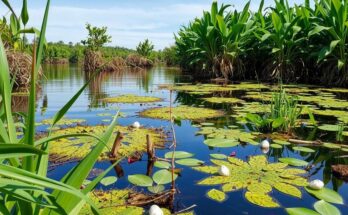The State of Canada’s Birds 2024 report reveals that 36% of bird species have declined since 1970, with notable drops among grassland and shorebirds. While some species like waterfowl have increased by 46%, urgent conservation actions are needed to combat habitat loss and climate change. Canadians are encouraged to actively participate in protective measures to support their local avian populations.
The 2024 edition of The State of Canada’s Birds report, released by Environment and Climate Change Canada in partnership with Birds Canada, paints a vivid portrait of the avian populace across the nation. It reveals that, out of 463 regularly occurring bird species, 36% have seen their numbers dwindle since 1970—an alarming trend that echoes through the fields and forests of Canada. Meanwhile, 31% of species have managed to thrive, a beacon of hope amid the statistics. Visually anchoring this data is a spaghetti chart illustrating the shifts from 1970 to 2020: waterfowl have surged by 46%, birds of prey by 35%, and wetland dwellers by 21%. But not all tales are triumphant; grassland birds are experiencing a catastrophic 67% decline, their numbers spiraling downwards as the native grasslands they depend on vanish beneath the weight of agriculture and urban sprawl. In the north, Arctic birds face a dire plight with a 28% decrease, while aerial insectivores, which once danced gracefully through the skies, have plunged by 43%. The report outlines that the multifaceted threats to these birds stem primarily from habitat destruction, shifting climate patterns, predation by feral cats, and perilous collisions with manmade structures—a stark reminder of the interconnectedness of life. But amidst these dark clouds linger opportunities for action. Canadians are called to create safe havens for birds by nurturing local flora, keeping pets leashed in sensitive environments, and committing to sustainable practices that reduce fossil fuel dependency. Civic participation in conservation efforts—like tree planting and species monitoring—further enhances the narrative of hope for endangered birds, offering a ‘flight plan’ for those who choose to engage. In this symphony of statistics, the report not only informs but also inspires a nationwide movement toward avian conservation, urging every observer of nature to take part in safeguarding the skies for generations to come.
The State of Canada’s Birds 2024 report, a collaborative effort between Environment and Climate Change Canada and Birds Canada, offers an insightful analysis of bird populations in Canada by documenting the changes since 1970. It examines the trends of 463 bird species, providing a comprehensive perspective on the health of avian populations and ecosystems. The findings highlight significant declines in certain groups of birds, particularly those reliant on grasslands and wetlands, while also showcasing some successes that stem from conservation efforts. This analysis serves as a clarion call for action, addressing the various threats birds face, including habitat loss, climate change, and predation by domestic animals.
The State of Canada’s Birds 2024 report underscores the urgent need for conservation efforts as we witness shifts in bird populations across the country. With 36% of species decreasing, particularly in grasslands and wetlands, and emerging threats from habitat destruction and climate change, the time for action is now. Yet amidst these challenges lies hope, as demonstrated by the rebound of certain species thanks to concerted conservation actions. By fostering awareness and engagement, Canadians can collectively rewrite the narrative for their feathered companions, ensuring that the skies remain vibrant and alive with the songs of birds.
Original Source: www.canada.ca


